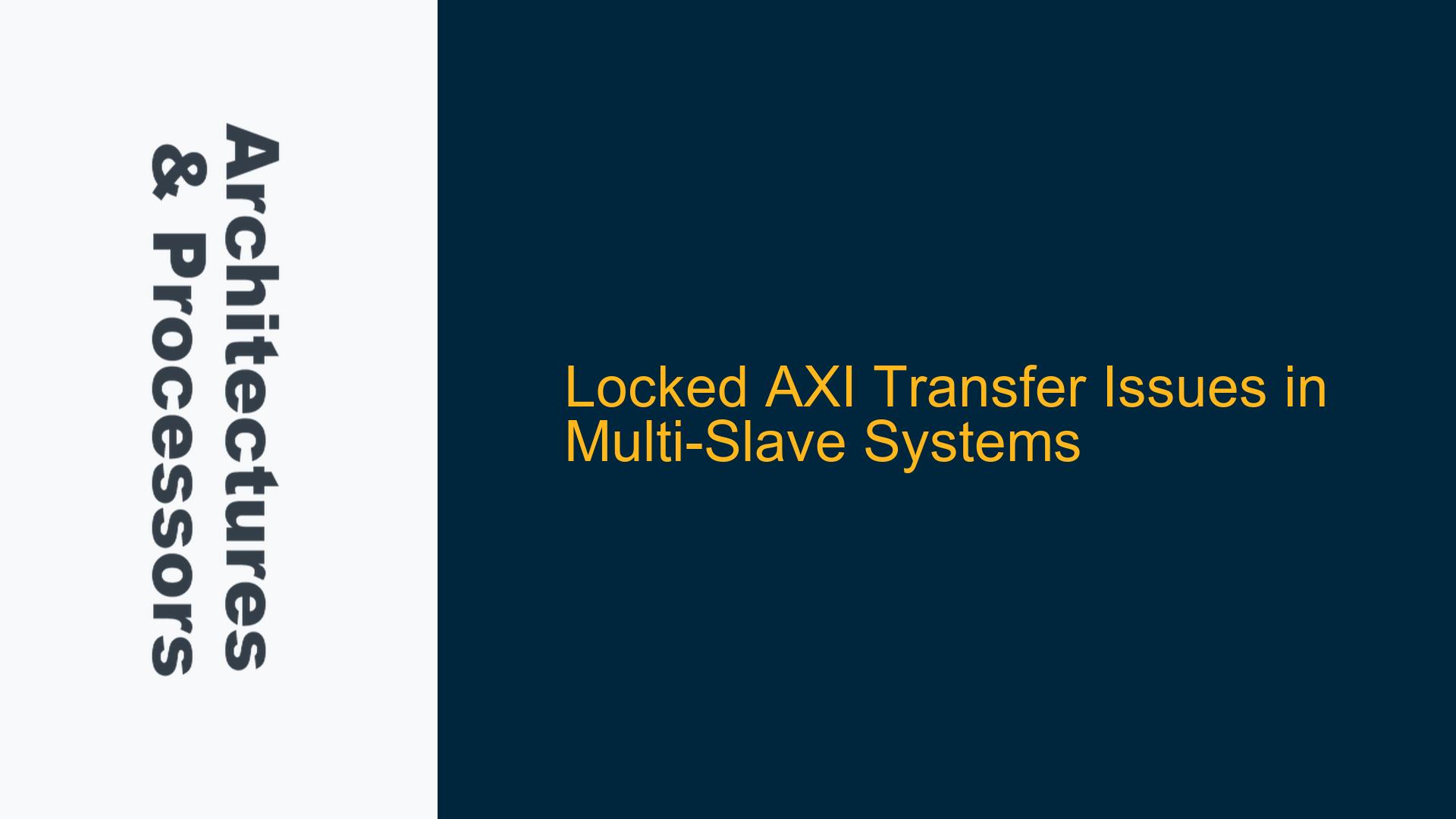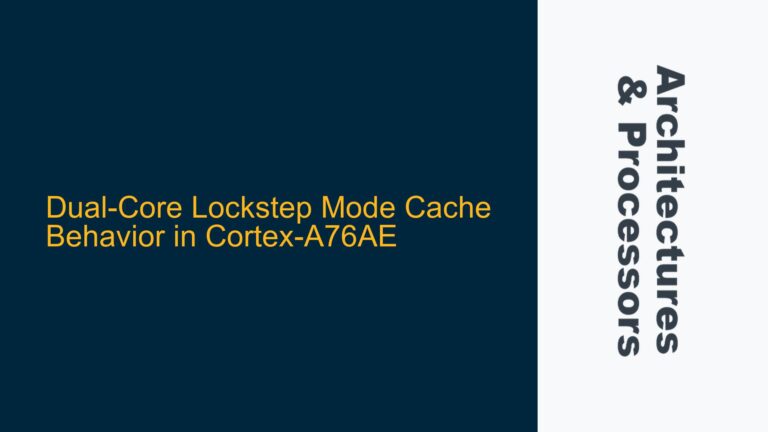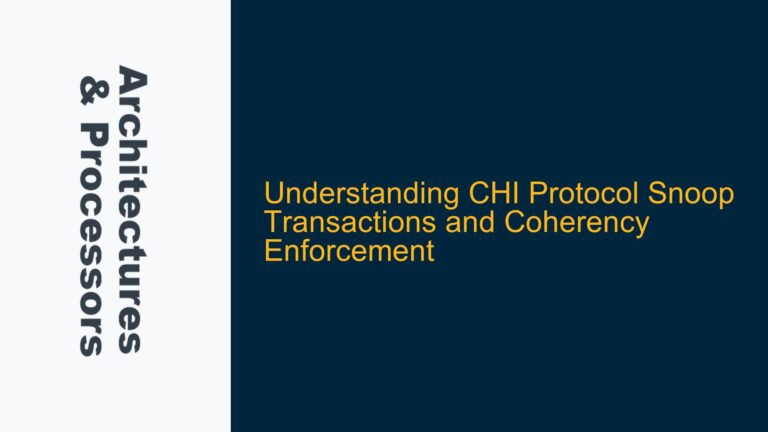Locked AXI Read-Write Transaction Ordering and Multi-Slave Locking
The core issue revolves around the behavior of locked AXI transactions, particularly when dealing with back-to-back read and write operations, as well as the implications of locking multiple slaves simultaneously. Locked transactions in AXI are designed to ensure atomicity, meaning that once a master initiates a locked sequence, no other master can access the locked slave until the sequence is complete. However, this mechanism introduces complexities in transaction ordering, arbitration, and system performance, especially when multiple slaves or mixed read-write operations are involved.
When a master initiates a locked read transaction followed by a locked write transaction to the same slave, the AXI protocol mandates that the write transaction must wait for the read transaction to complete before proceeding. This ensures that the atomicity of the locked sequence is maintained. However, if the master issues the write transaction before the read transaction completes, the order of operations becomes undefined, potentially leading to race conditions or data corruption. This behavior is critical in systems where precise ordering of read-write operations is required, such as in memory-mapped I/O or shared resource access.
Furthermore, the scenario where a master attempts to lock multiple slaves simultaneously introduces additional challenges. While the AXI specification does not explicitly prohibit locking multiple slaves, it strongly recommends against it due to the significant performance degradation it can cause. Locking multiple slaves can lead to deadlock situations, where other masters are indefinitely blocked from accessing critical resources, thereby stalling the entire system. This is particularly problematic in high-performance systems where multiple masters need concurrent access to shared resources.
AXI Protocol Constraints and Arbitration Grant Timing
The AXI protocol imposes specific constraints on locked transactions to ensure system stability and performance. One such constraint is the recommendation to limit locked sequences to a single 4KB address region and to restrict the sequence to no more than two transactions. These recommendations are not mandatory but are intended to minimize the impact of locked transactions on system performance. Locked transactions inherently block other masters from accessing the locked slave, which can lead to significant bottlenecks in multi-master systems.
Arbitration grant timing is another critical aspect of locked transactions. When a master initiates a locked sequence, the arbiter at the slave port must ensure that the grant is maintained until the entire locked sequence is complete. This means that the arbiter cannot switch grants to another master until all outstanding transactions in the locked sequence have been completed. For example, if a master issues a locked read followed by a locked write, the arbiter must hold the grant for both the AR (read address) and AW (write address) channels until both transactions are complete. This behavior ensures that the atomicity of the locked sequence is preserved but can lead to inefficiencies in the arbitration logic, especially in systems with high contention for shared resources.
The AXI protocol also specifies that both the AR and AW channels must be locked before sending the requests for locked transactions. This requirement ensures that the slave is fully locked for both read and write operations, preventing any other master from interleaving transactions. However, this can complicate the design of the arbiter, as it must handle the locking and unlocking of both channels in a coordinated manner. Failure to properly implement this logic can result in deadlock or data corruption scenarios.
Implementing Locked Transactions with Minimal Performance Impact
To implement locked transactions with minimal performance impact, designers must carefully consider the following strategies:
-
Transaction Ordering and Completion Tracking: Ensure that the master waits for the completion of a locked read transaction before issuing a locked write transaction. This can be achieved by monitoring the RLAST signal for read transactions and the BVALID signal for write transactions. By ensuring that the read transaction is fully completed before initiating the write transaction, designers can avoid undefined behavior and maintain the atomicity of the locked sequence.
-
Arbiter Design for Locked Sequences: The arbiter must be designed to handle locked sequences efficiently. This includes maintaining the grant for both the AR and AW channels until the entire locked sequence is complete. The arbiter should also prioritize unlocking the slave as soon as the locked sequence is finished to minimize the blocking of other masters. Implementing a state machine within the arbiter to track the status of locked sequences can help achieve this.
-
Limiting Locked Sequences: Adhere to the AXI protocol’s recommendation to limit locked sequences to a single 4KB address region and no more than two transactions. This reduces the duration for which the slave is locked, thereby minimizing the impact on system performance. Designers should also consider alternative mechanisms, such as semaphores or software-based locking, for scenarios where long-duration locking is required.
-
Deadlock Avoidance: When locking multiple slaves, designers must ensure that the locking order is consistent across all masters to avoid deadlock scenarios. For example, if Master A locks Slave 1 and then attempts to lock Slave 2, while Master B locks Slave 2 and then attempts to lock Slave 1, a deadlock can occur. Implementing a global locking order or using timeouts to break deadlocks can help mitigate this risk.
-
Performance Monitoring and Optimization: Use performance monitoring tools to track the impact of locked transactions on system performance. This includes monitoring the latency introduced by locked sequences and the contention for shared resources. Based on this data, designers can optimize the arbitration logic or adjust the system architecture to reduce the impact of locked transactions.
By carefully considering these strategies, designers can implement locked transactions in AXI-based systems while minimizing their impact on system performance and stability. This requires a deep understanding of the AXI protocol, as well as careful design and verification of the arbitration and locking mechanisms.
Conclusion
Locked transactions in AXI-based systems are a powerful tool for ensuring atomicity and data integrity, but they come with significant challenges in terms of transaction ordering, arbitration, and system performance. By understanding the constraints imposed by the AXI protocol and implementing careful design strategies, designers can effectively manage locked transactions while minimizing their impact on system performance. This includes ensuring proper transaction ordering, designing efficient arbiters, limiting the scope of locked sequences, avoiding deadlocks, and continuously monitoring and optimizing system performance. Through these efforts, designers can achieve the desired system behavior without compromising on performance or stability.






